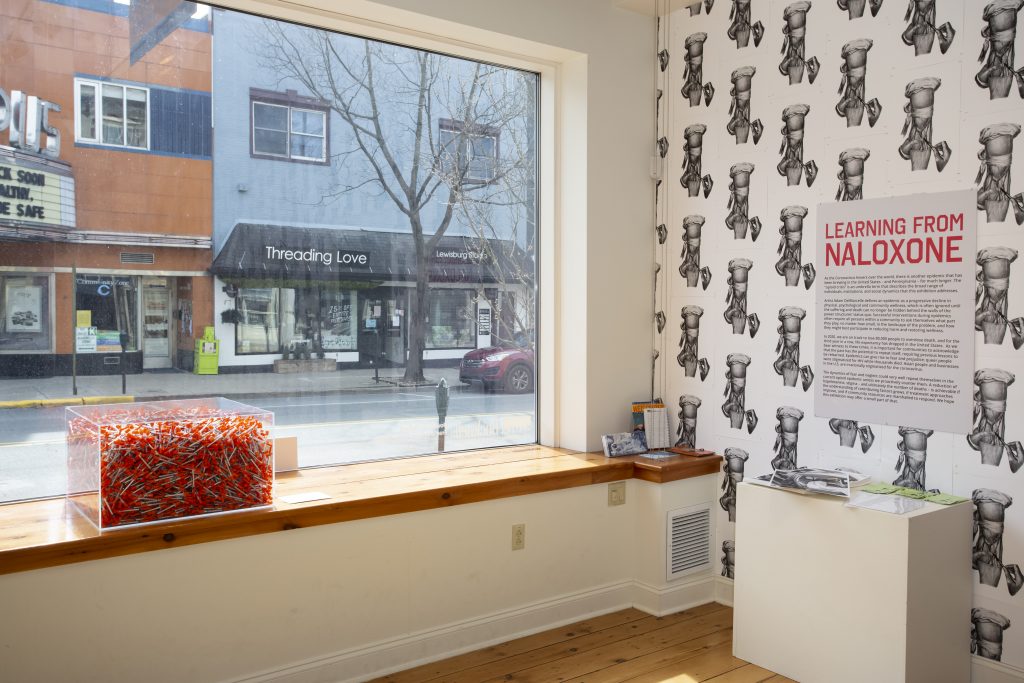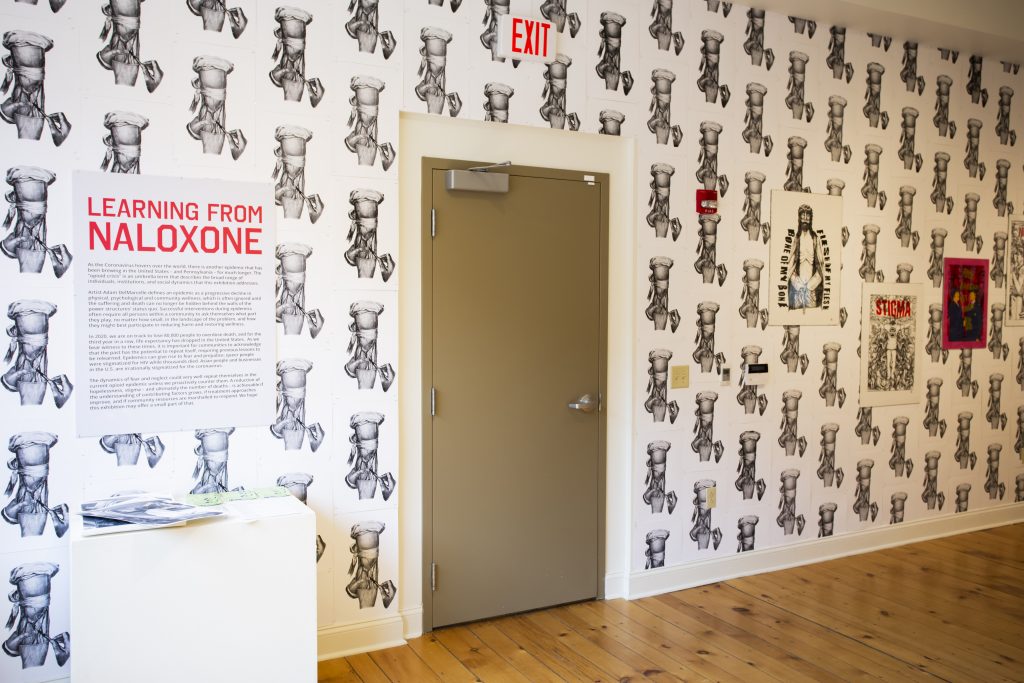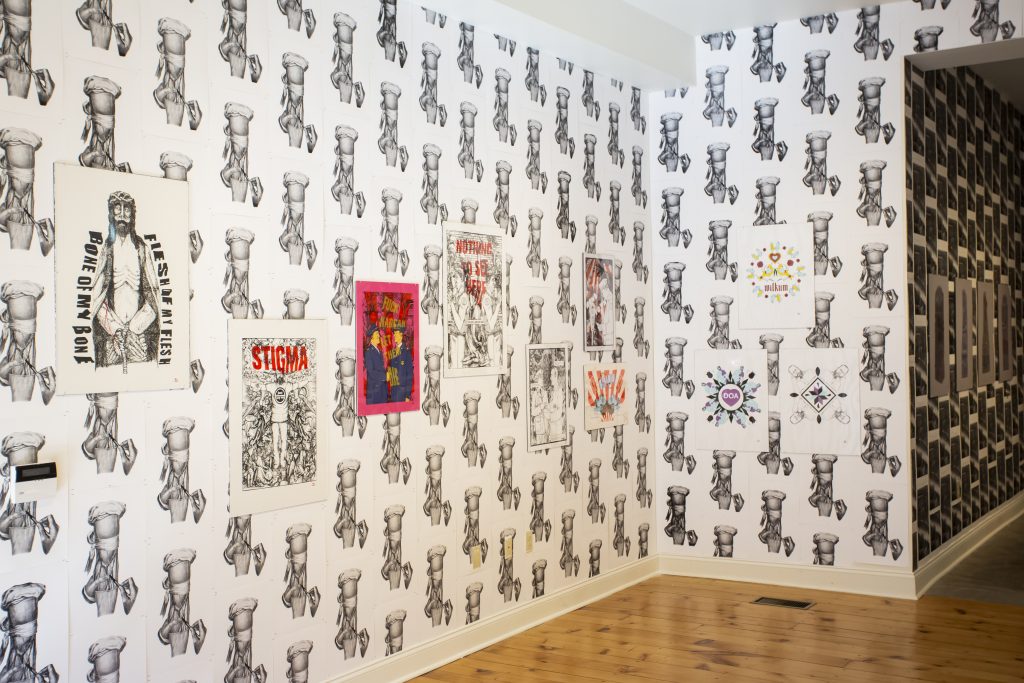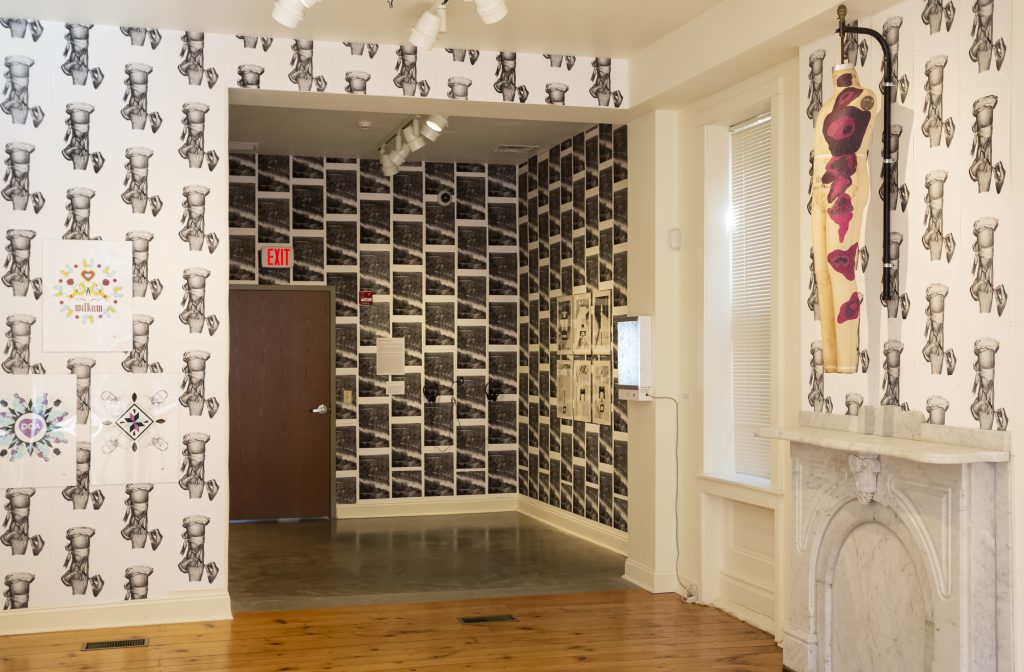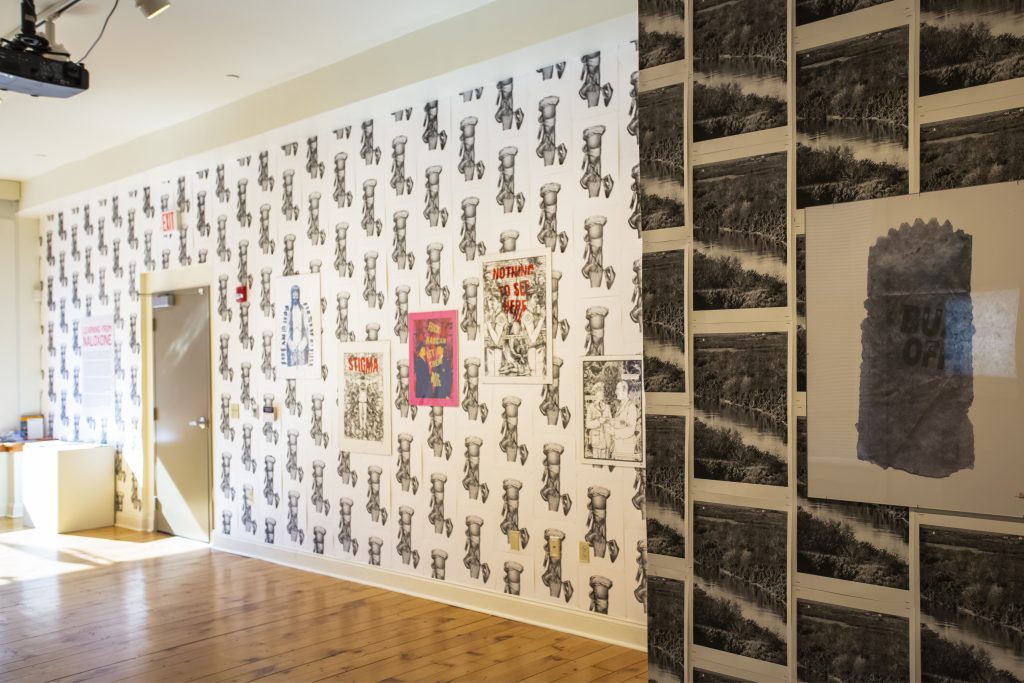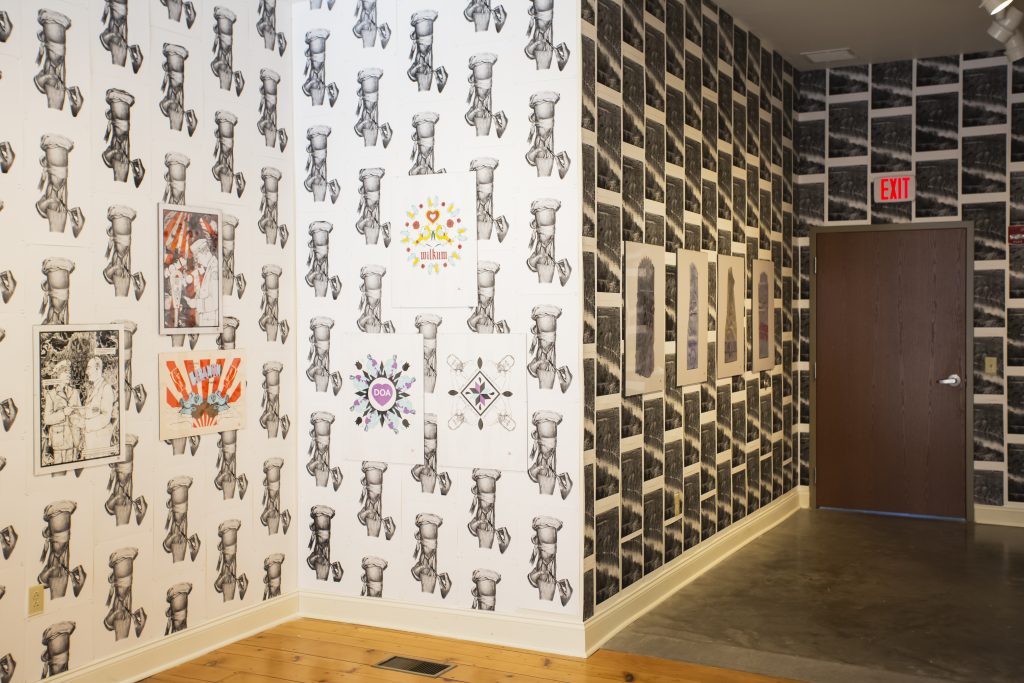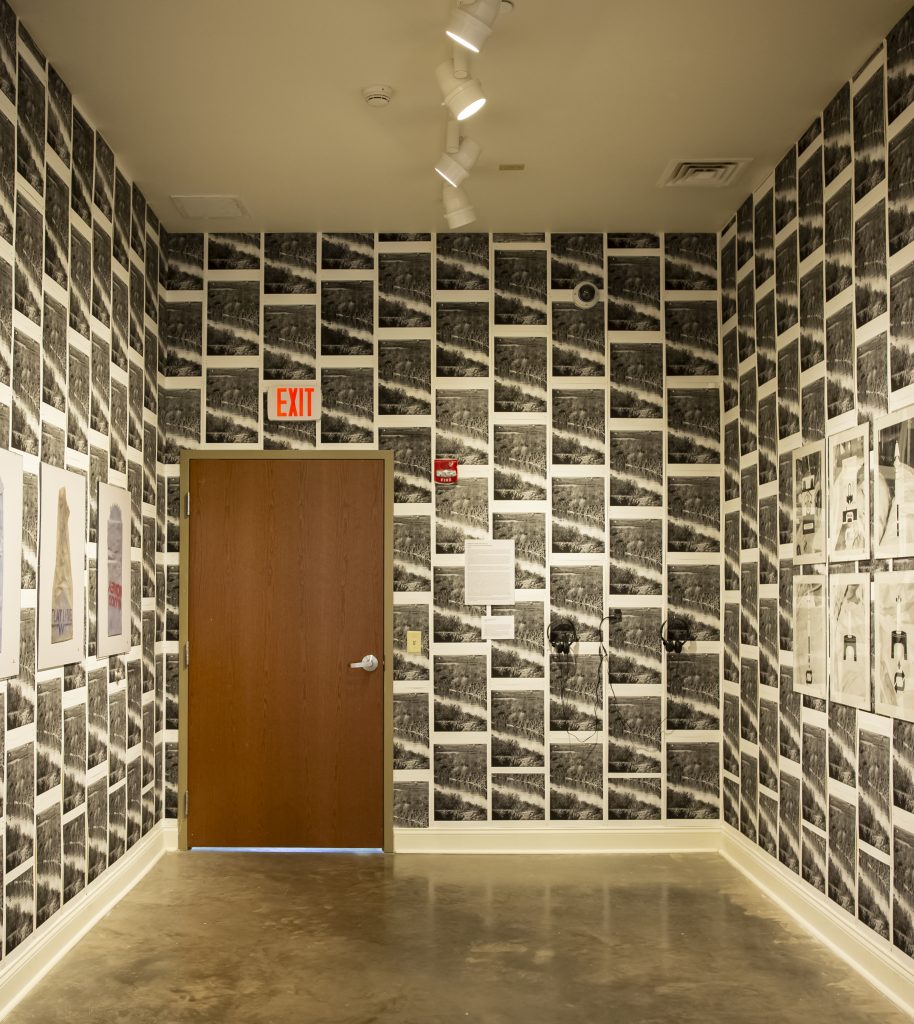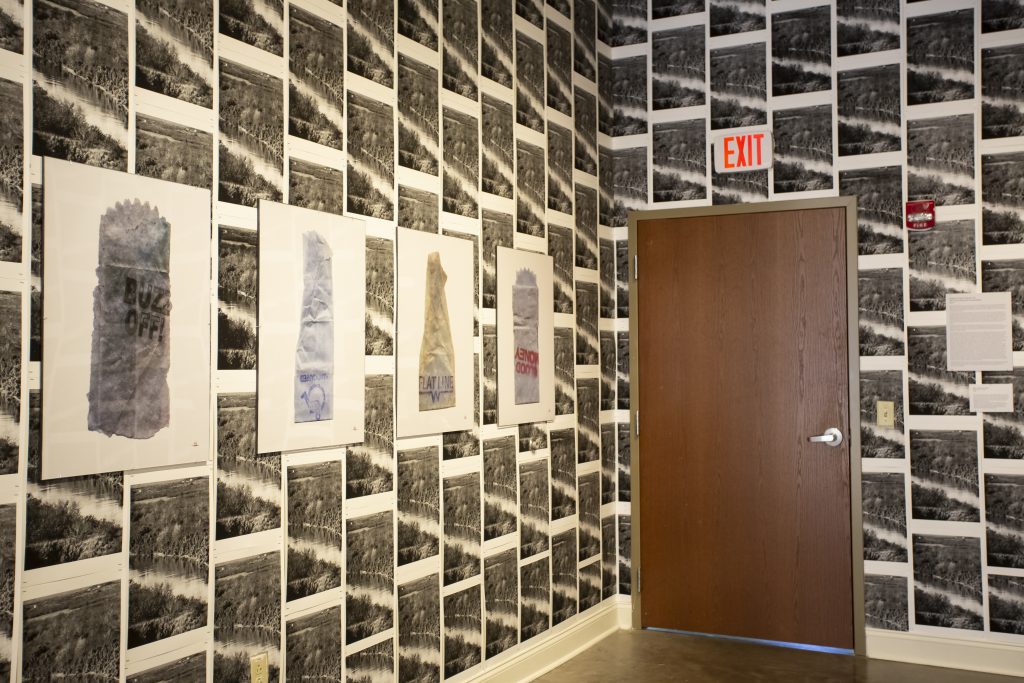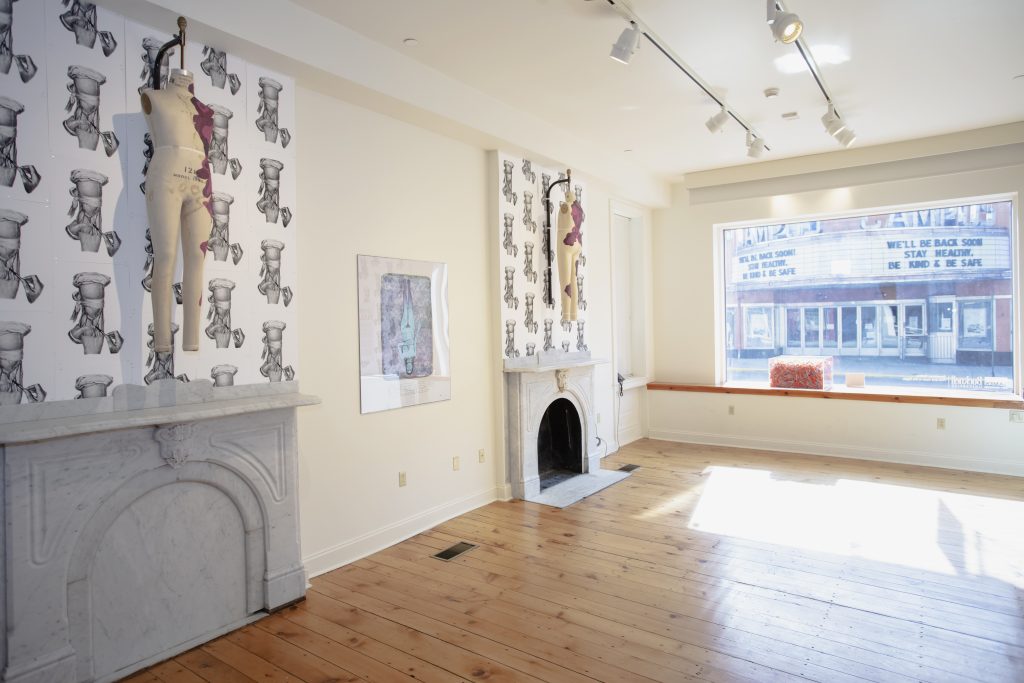March 17 – August 29, 2020
About:
Motivated into action by a tragic loss, Adam DelMarcelle of Lebanon, PA devotes his artistic practice to confronting the opioid crisis and heroin addiction. This multi-part project deploys guerrilla political posters, augmented reality, and community health programs.
Related Events
Adam DelMarcelle’s interview about exhibition Learning From Naloxone video.
Fighting the Stigma of the Opioid Epidemic
Canceled due to COVID – 19.
Understanding the Opioid Crisis in Pennsylvania: Diverse Professions Share their Perspective
Tuesday, April 14, 6 p.m.
Iron Front Event Space, 434 Market St. Lewisburg PA
More than 100 people die every day in the United States due to an opioid overdoes. This discussion will look at the opioid crisis that is plaguing our community through the lens of science, medicine, and art. Our panelist includes Behavioral Neuroscientist Judy Grisel, Nurse Practitioner Sandra Cook, and Learning from Naloxone artist Adam DelMarcelle.
Curatorial Text:
As the Coronavirus hovers over the world, there is another epidemic that has been brewing in the United States – and Pennsylvania – for much longer. The “opioid crisis” is an umbrella term that describes the broad range of individuals, institutions, and social dynamics that this exhibition addresses.
Artist Adam DelMarcelle defines anepidemic as a progressive decline in physical, psychological and community wellness, which is often ignored until the suffering and death can no longer be hidden behind the walls of the power structures’ status quo. Successful interventions during epidemics often require all persons within a community to ask themselves what part they play, no matter how small, in the landscape of the problem, and how they might best participate in reducing harm and restoring wellness.
In 2020, we are on track to lose 80,000 people to overdose death, and for the third year in a row, life expectancy has dropped in the United States. As we bear witness to these times, it is important for communities to acknowledge that the past has the potential to repeat itself, requiring previous lessons to be relearned. Epidemics can give rise to fear and prejudice; queer people were stigmatized for HIV while thousands died. Asian people and businesses in the U.S. are irrationally stigmatized for the coronavirus.
The dynamics of fear and neglect could very well repeat themselves in the current opioid epidemic unless we proactively counter them. A reduction of hopelessness, stigma – and ultimately the number of deaths – is achievable if the understanding of contributing factors grows, if treatment approaches improve, and if community resources are marshalled to respond. We hope this exhibition may offer a small part of that.
Exhibited Works:
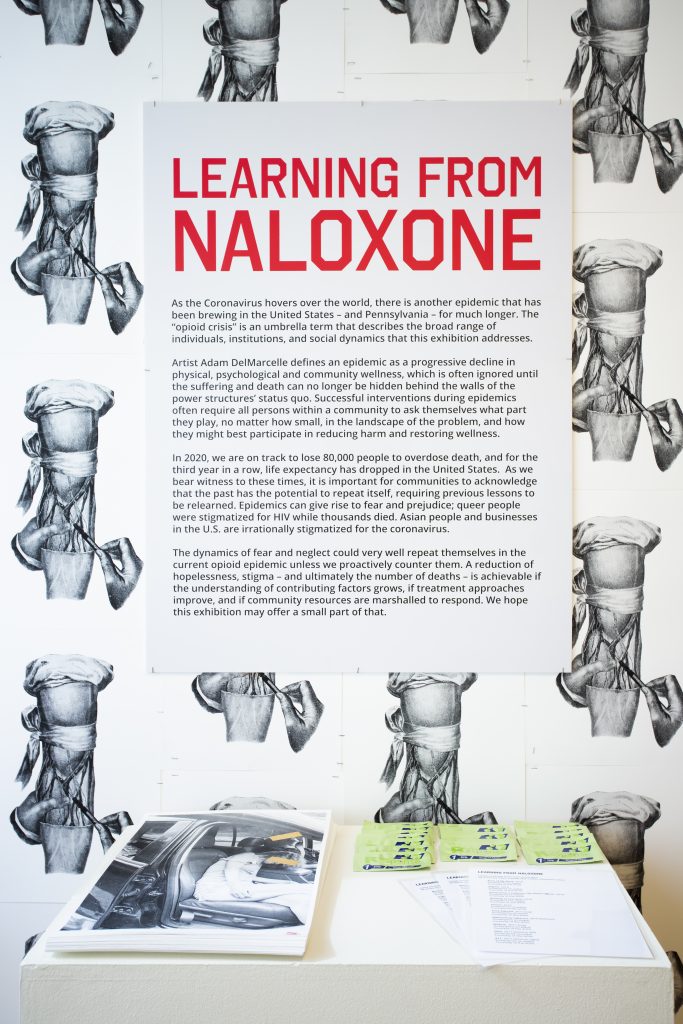
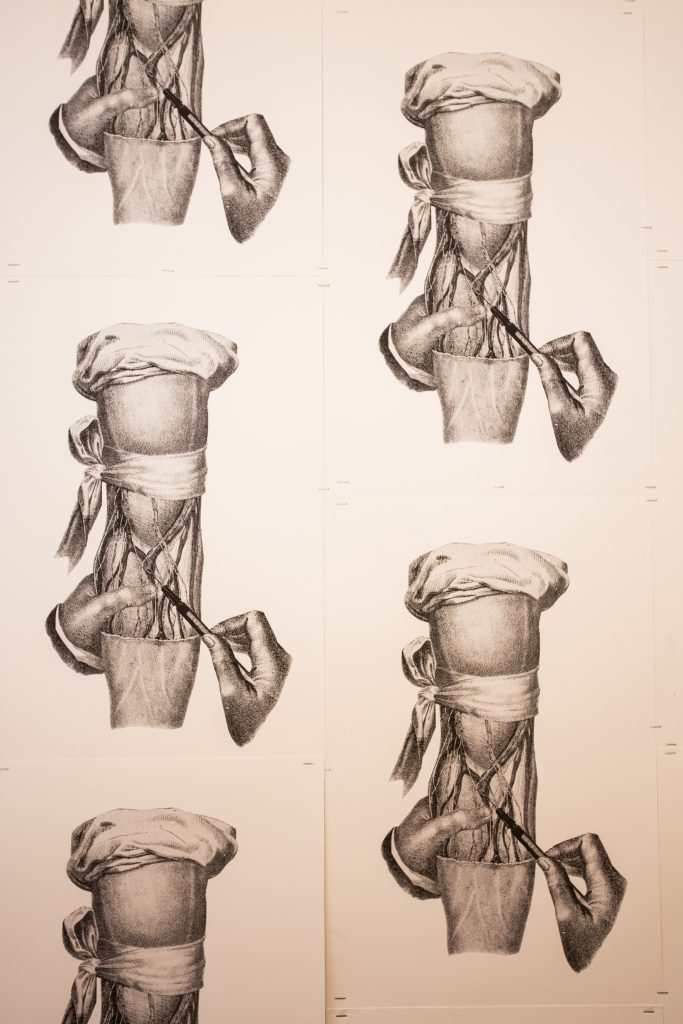
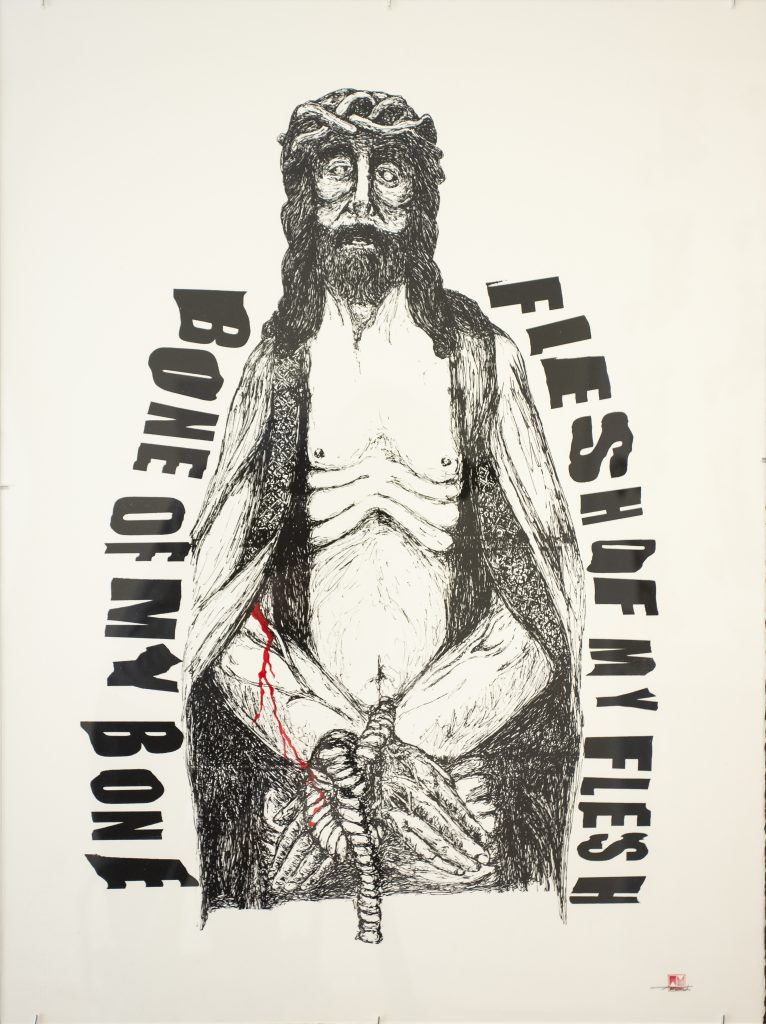
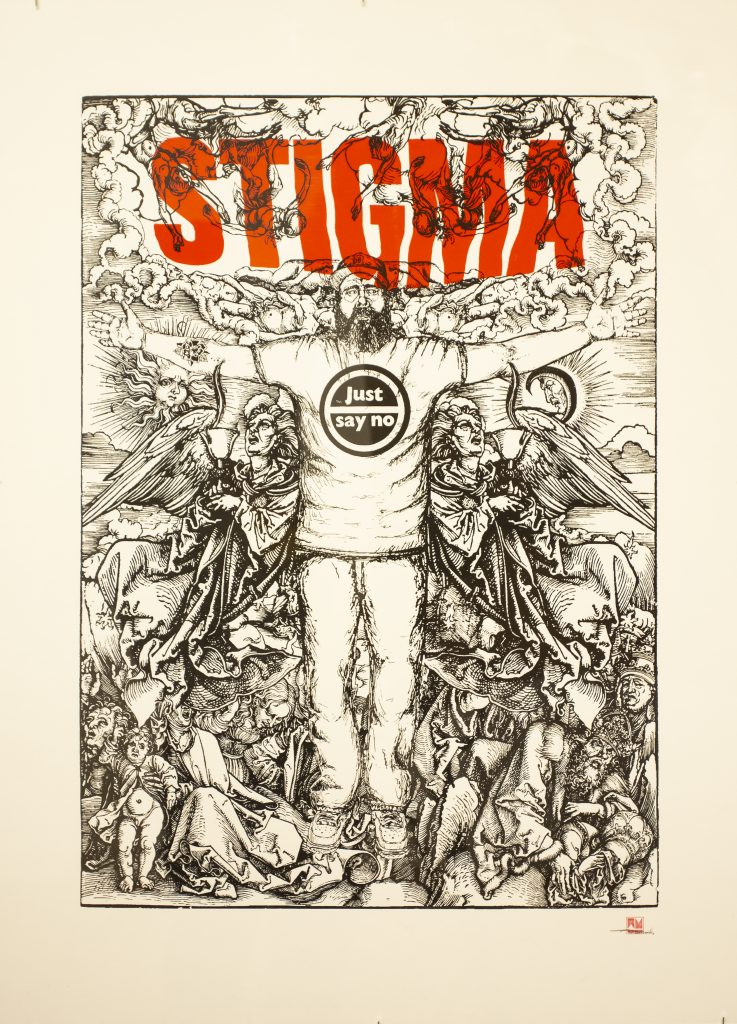

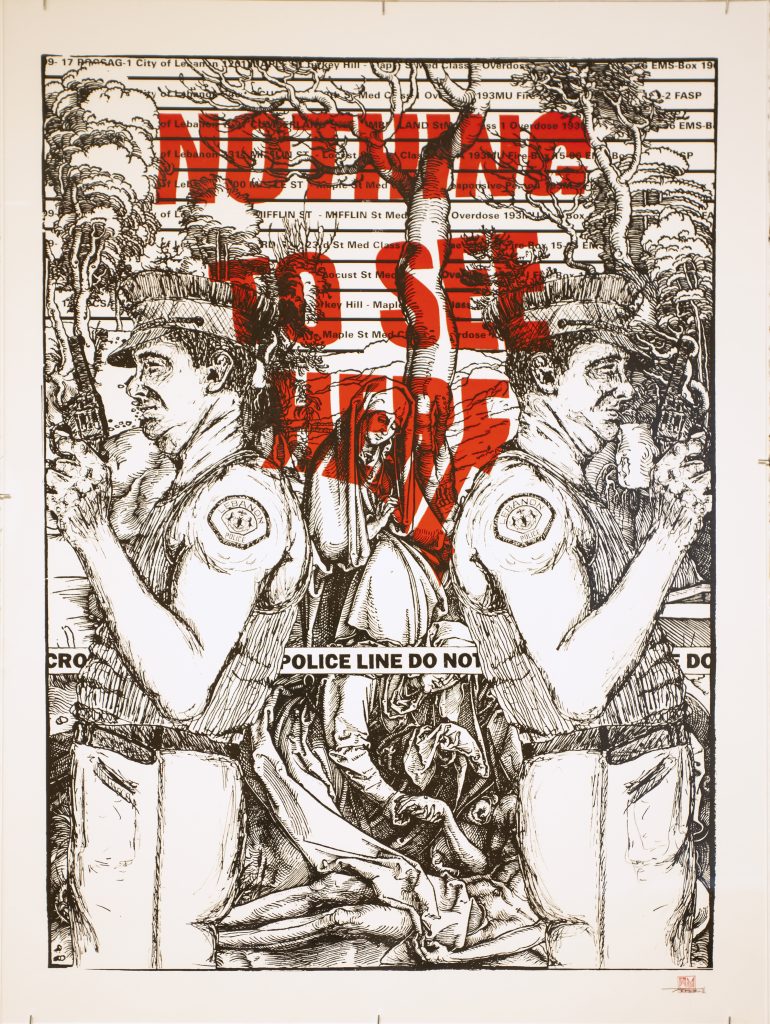



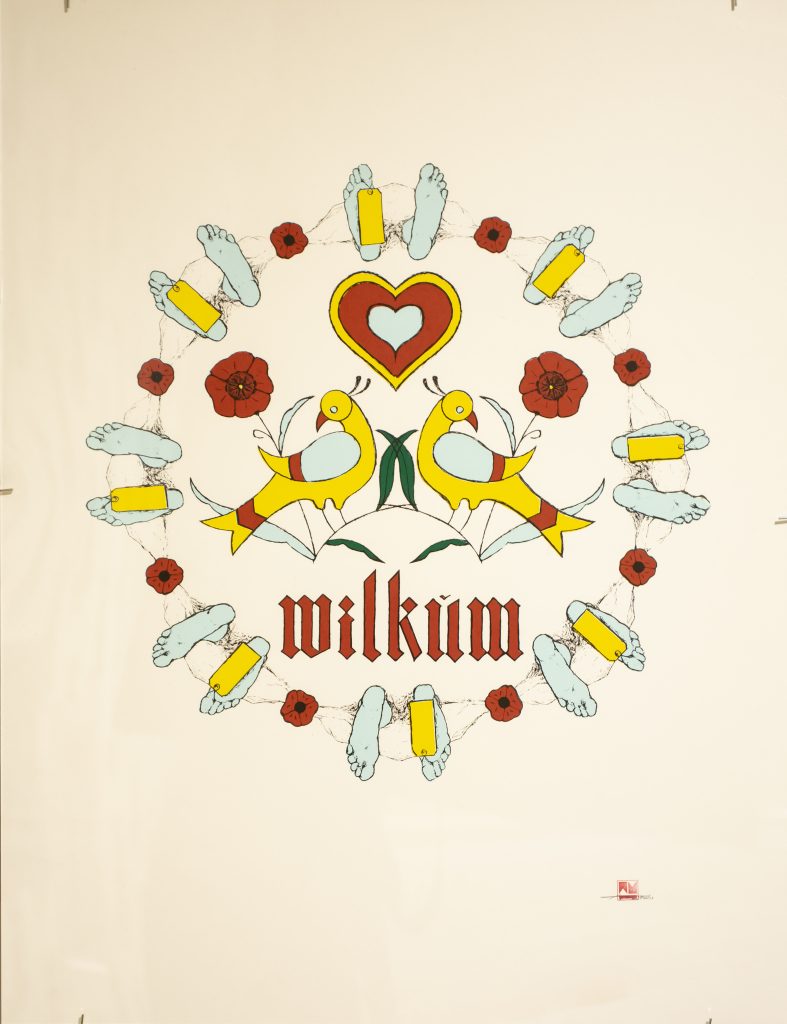
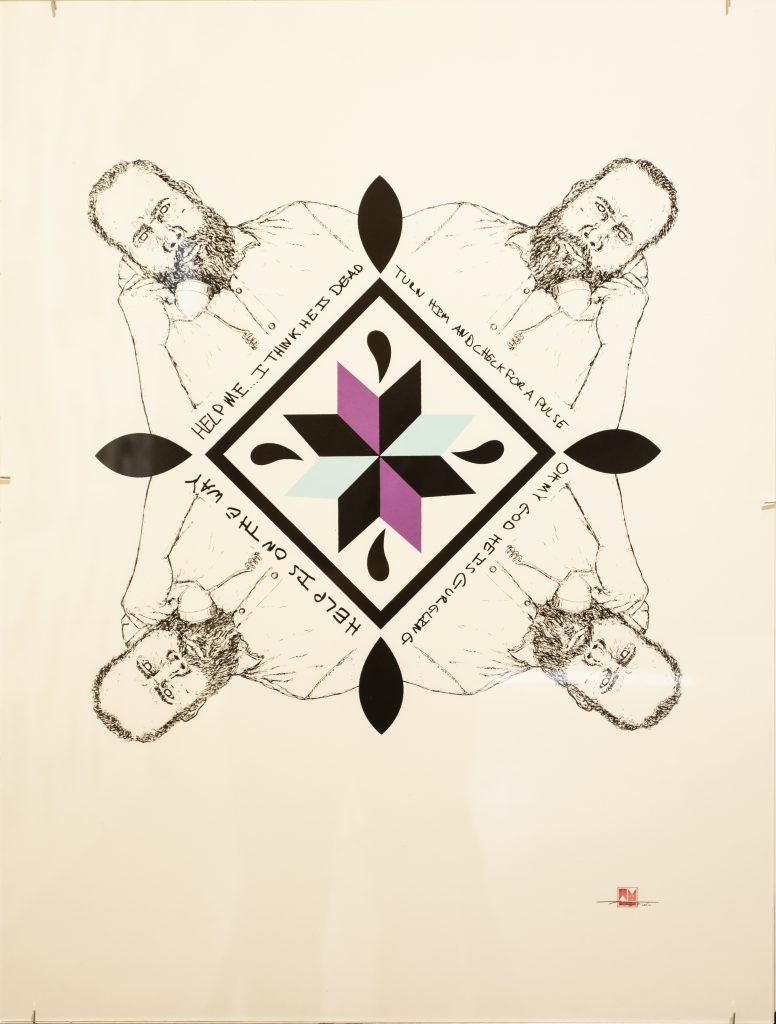
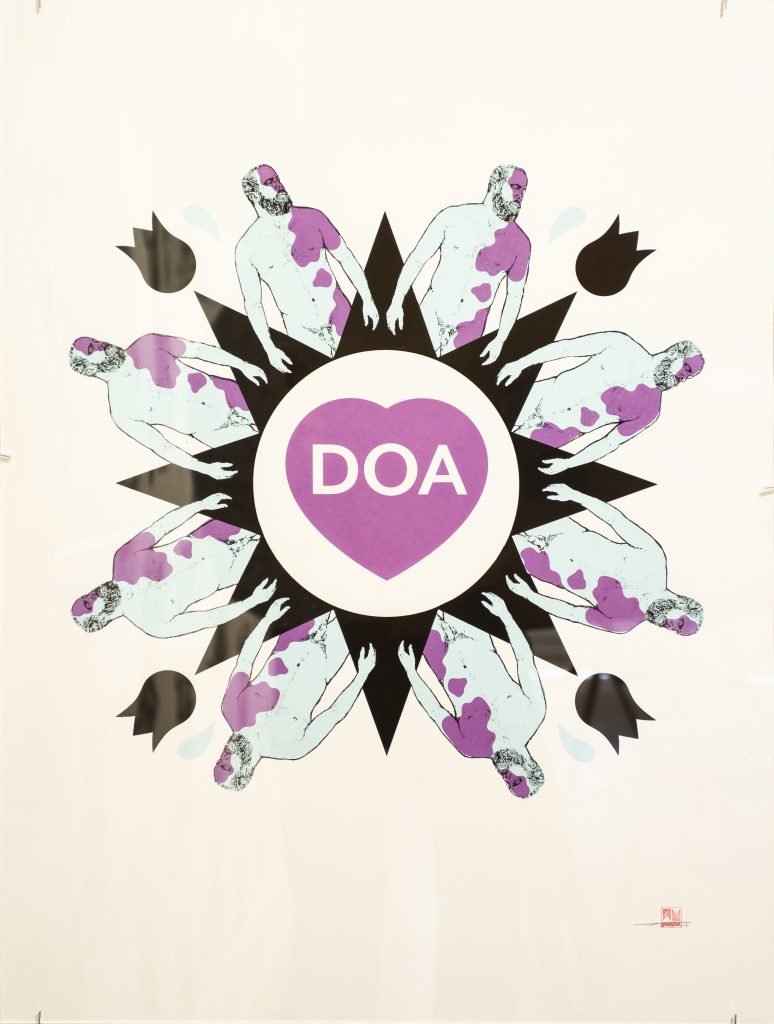

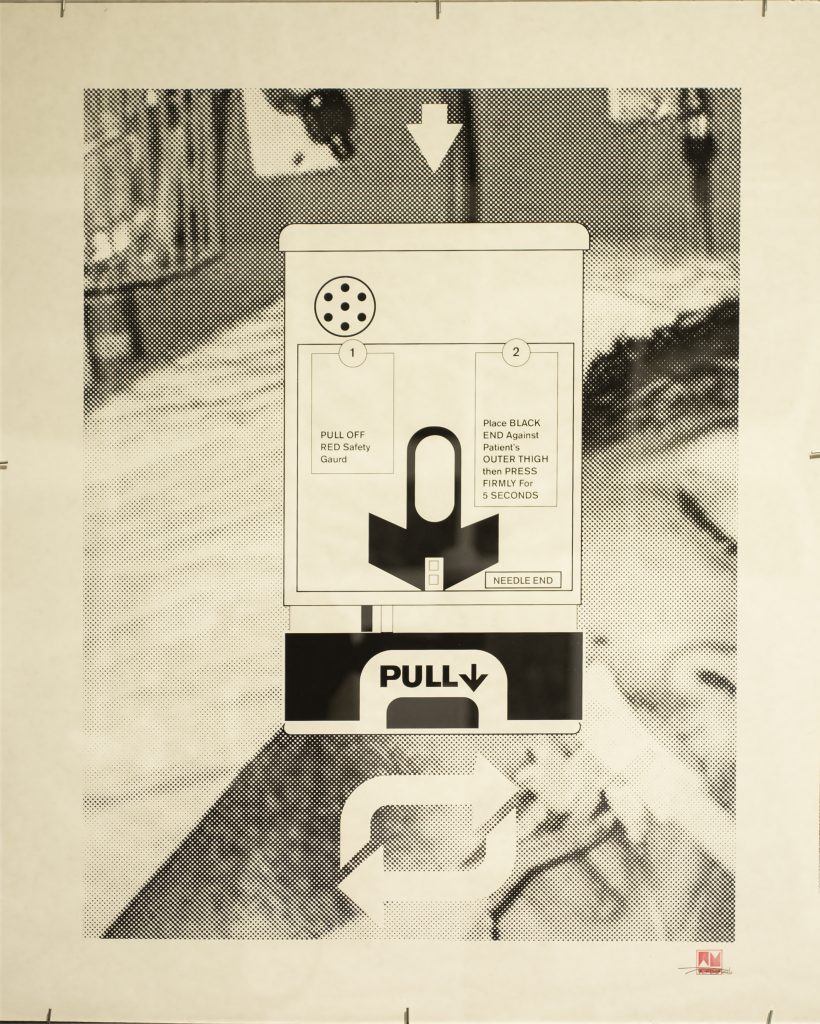
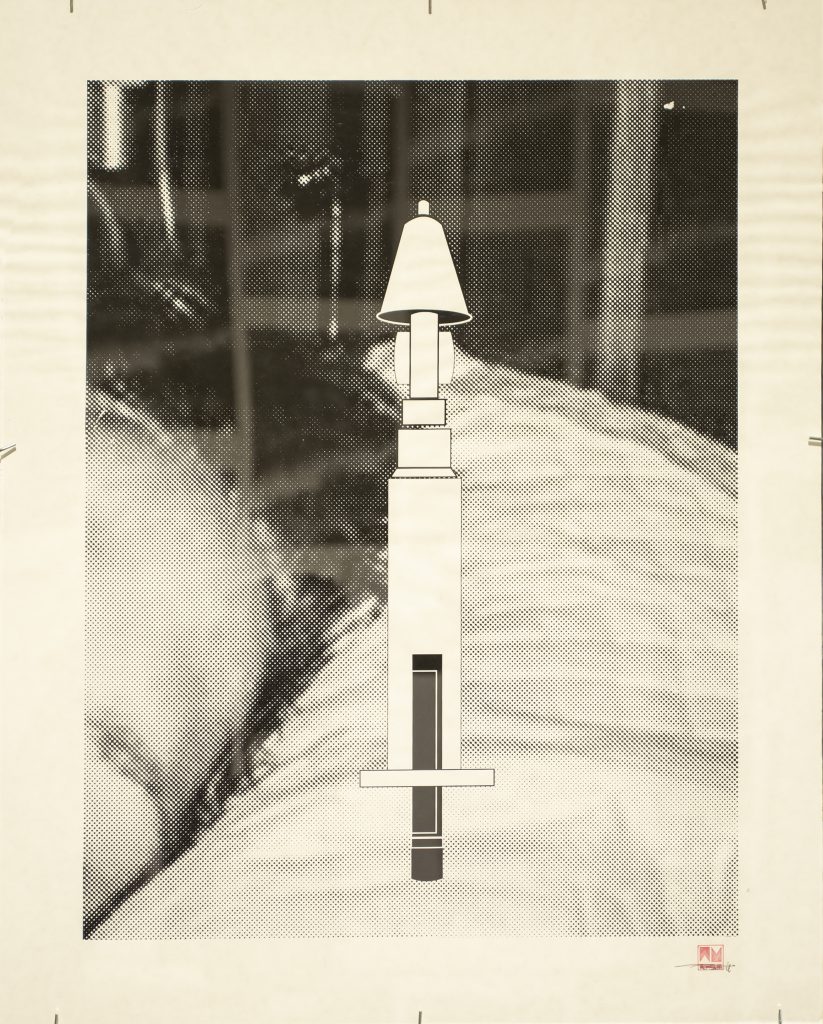

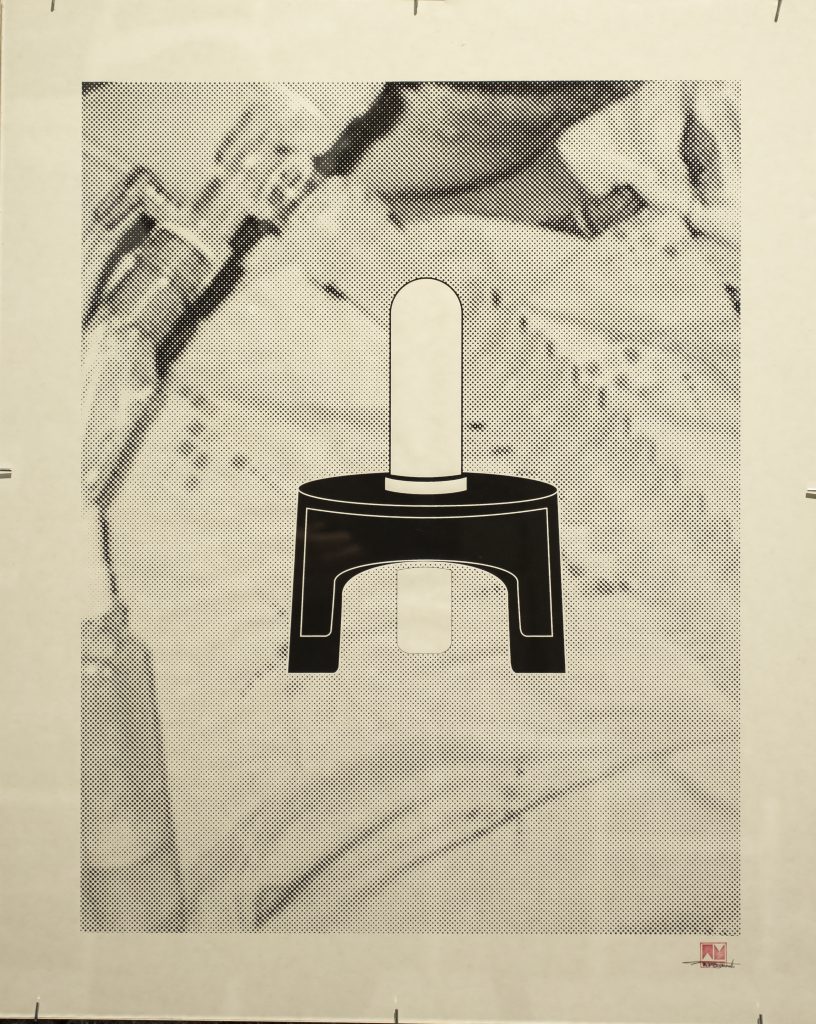
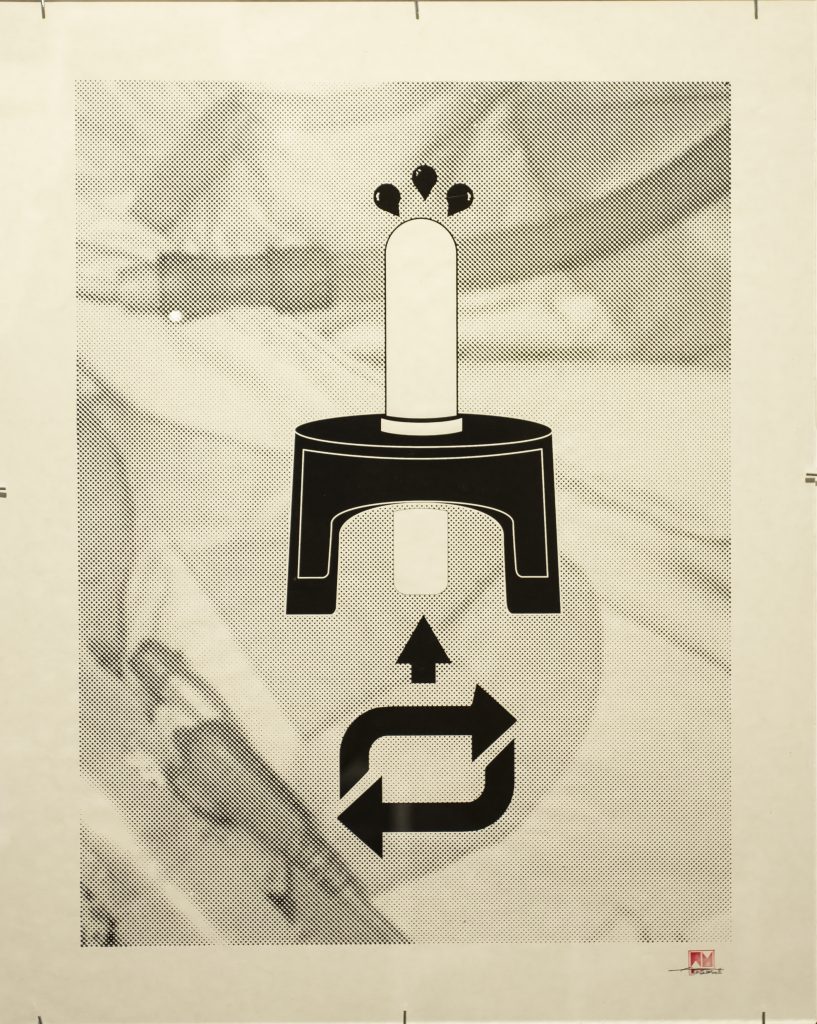
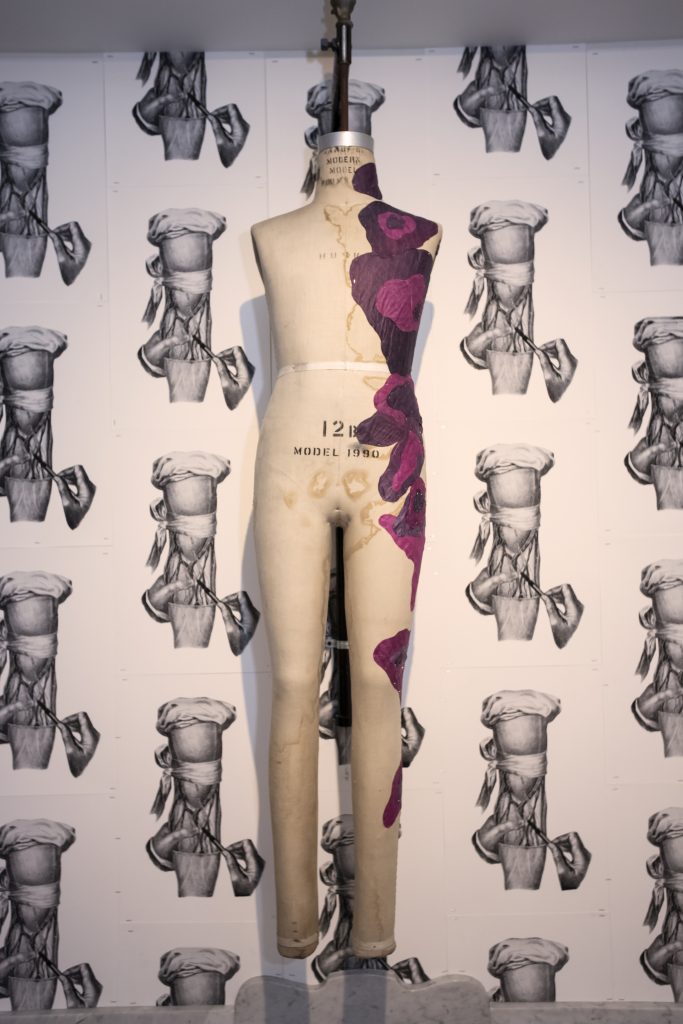
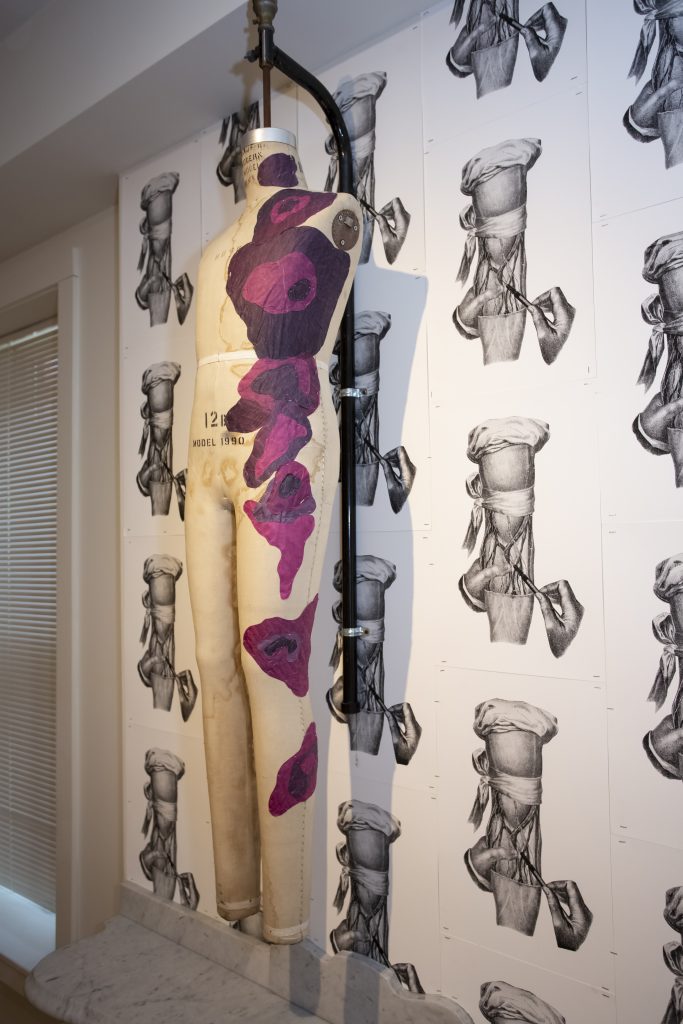


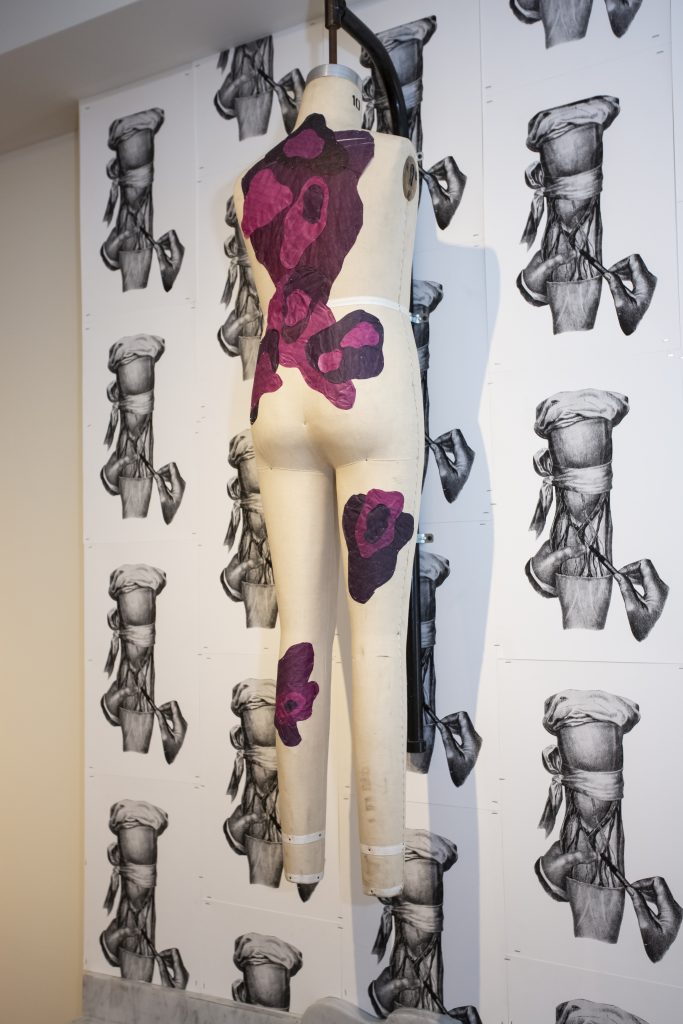
Syringe Installation
Sterile syringes in acrylic box,
14 x 24 x 24 inches 2020
Over the last three years 15,000 Pennsylvanians have died to overdose deaths.
This box contains 5,300 sterile syringes representing the average dead for each of these three years. 5,300 dead means close to 15 people every day in Pennsylvania die from the disease of addiction. Fifteen families forever shattered every 24 hours. This installation represents this loss but also a hope. At the conclusion of this exhibition the syringes in this box will be donated to a needle exchange in Pennsylvania representing 5,300 hundred chances to keep people safer, to not spread HIV or HCV, and to offer life and hope as a tribute to those that have left us far too soon.
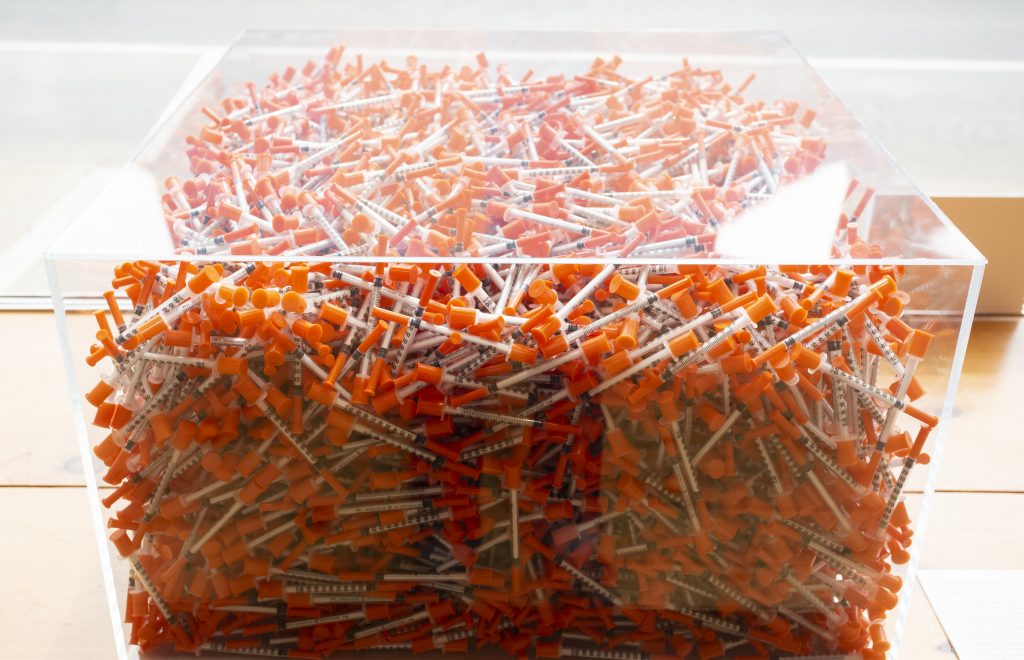
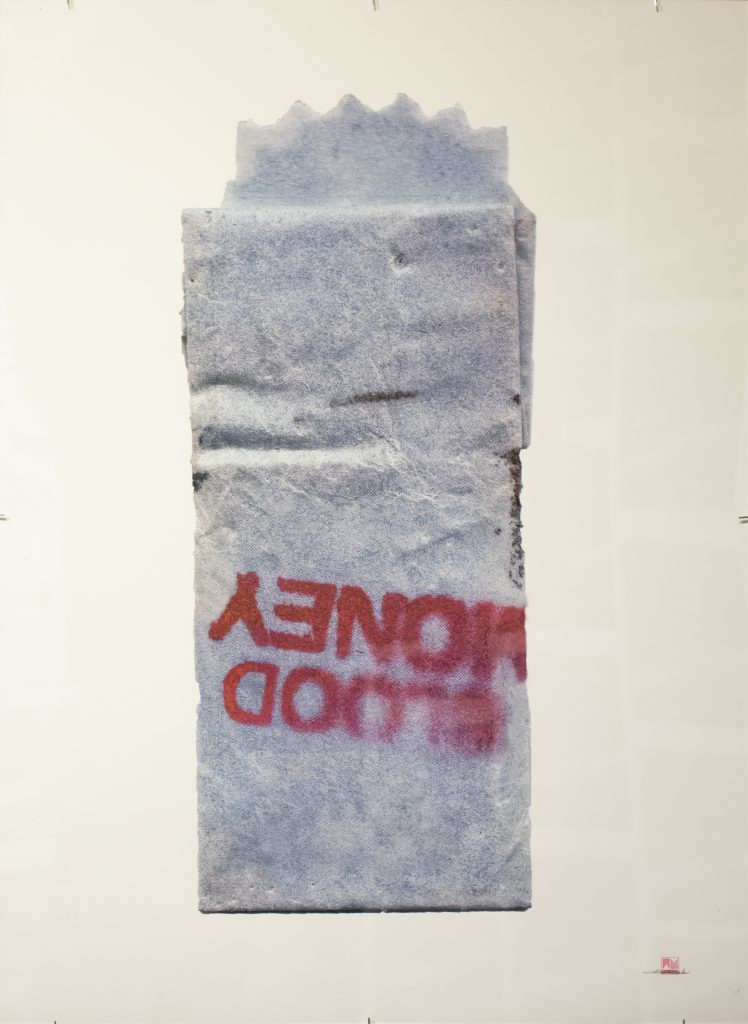
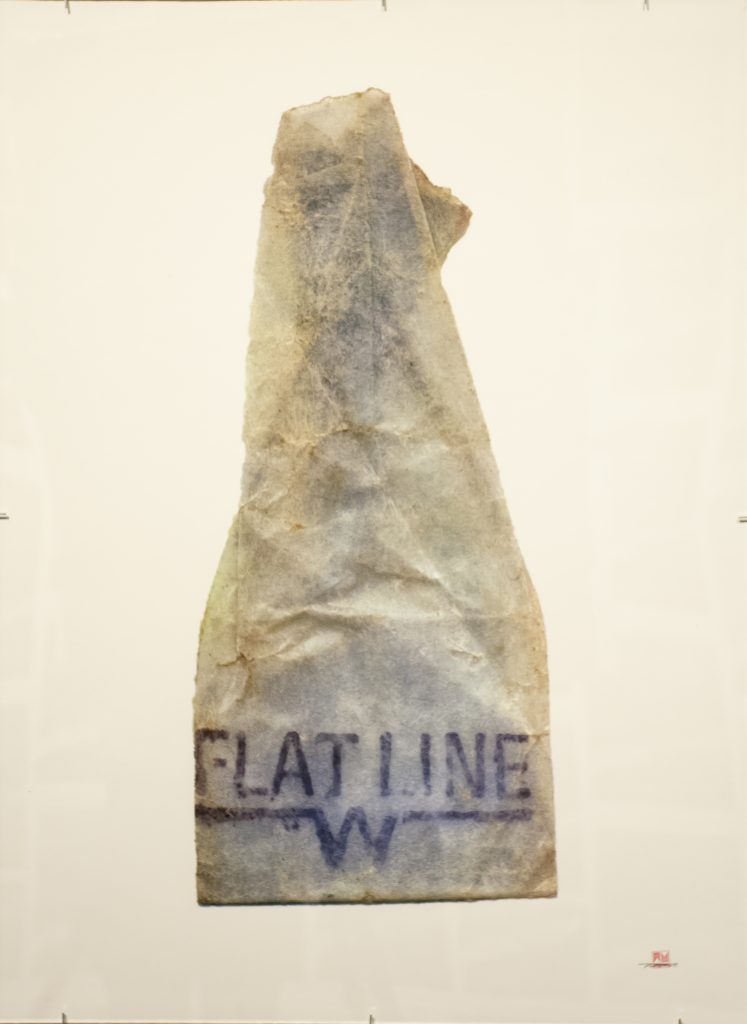
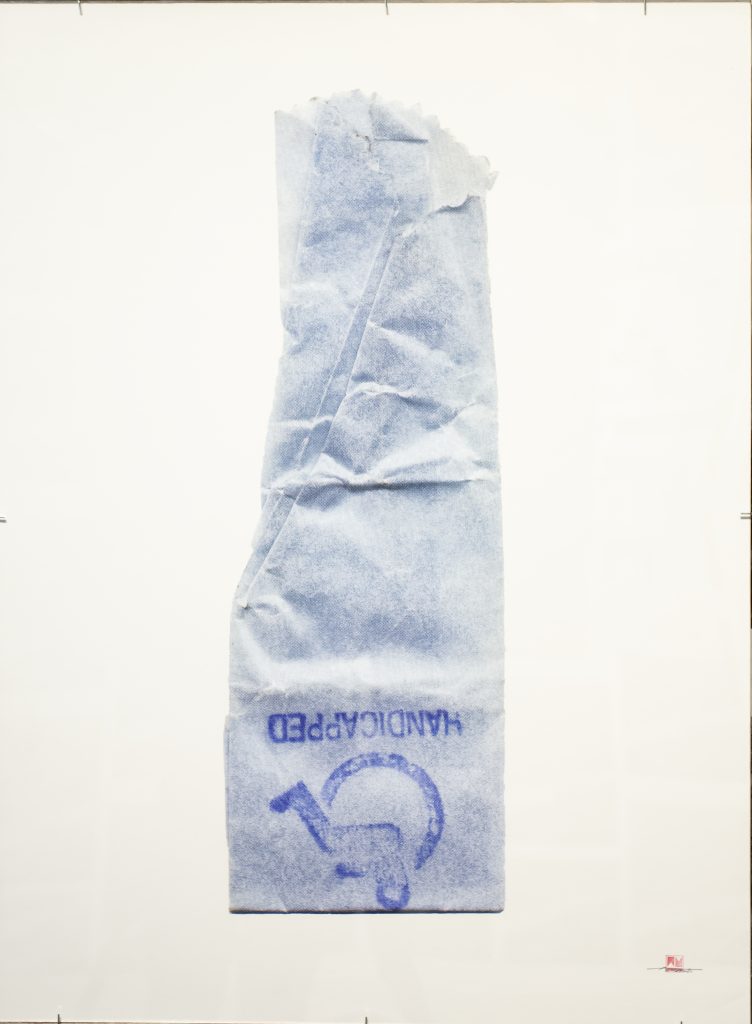
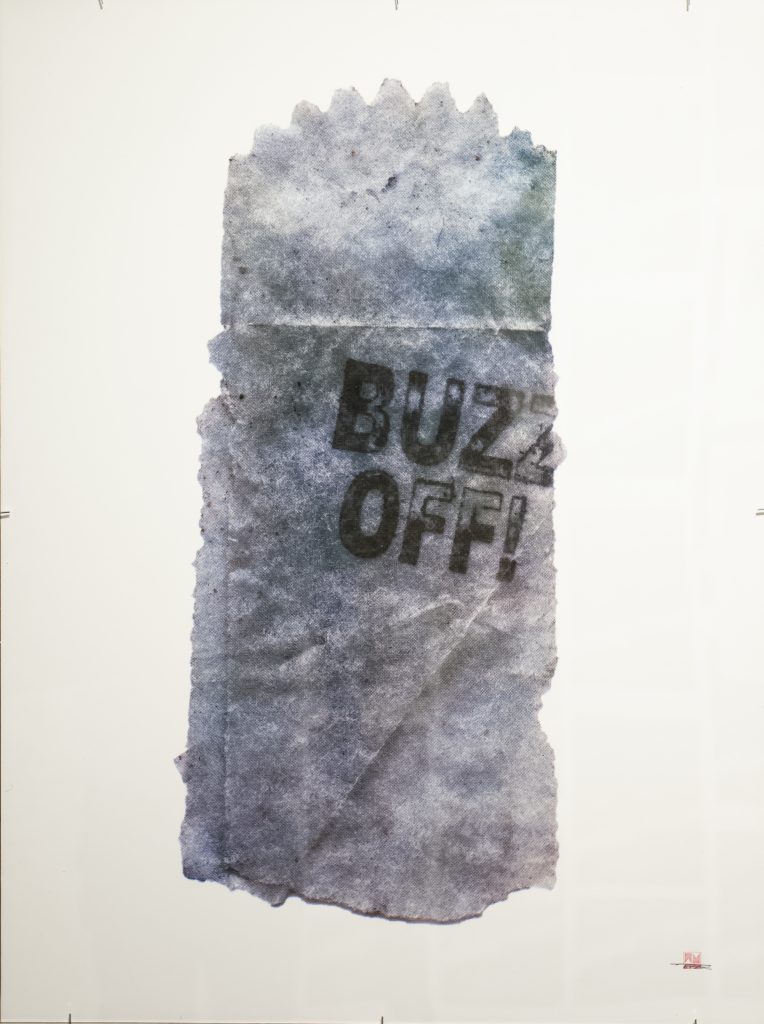
Ruego Por Noso (Pray for Us)
The Cost of American Consumption 2020
This installation features four screen prints of heroin packaging found on the streets of Philadelphia in 2020 (on wall at left). The wallpaper image shows the bank of Rio Grande separating Mexico from San Ygnacio Texas. This wallpaper is embedded with Augmented Reality images (virtual images viewable only on your smartphone after you download an app.) These virtual images reveal a truth I discovered in a gas station in Laredo.
In October of 2019 I traveled to San Ygnacio, Texas to the studio of a dear friend and collaborator Dr. Eric Avery. This name may seem familiar; his prints and social art actions in the 1980’s and 90’s about the AIDS epidemic were some of the most important works made as reportage and documentation of this terrible time in American history. The reason for my visit was to make paper made of the clothing of people that have died in America to overdose. Families from across the country shared with me precious artifacts and in some cases all they had left to remember their son or daughter, their husband or wife, their brother or sister. I carried with me bags of cut up clothing still bearing the smell of their owner in each thread of the fabric to the banks of the Rio Grande only a literal stone’s throw from Mexico.
My days were filled with learning the paper making process from a master and one of my most important mentors. We spoke of the people the clothing belonged too, we spoke about my brother Joey – who was a victim of overdose – and we did much laughing and crying as we watched the sheets of paper formed by our hands come to a new sense of life. The lives of so many now intertwined and pressed into singular sheets.
Eric also taught me about Mexico, about its long history of refugees steadily streaming across the river and through San Ygnacio. He explained the politics of human trafficking and pointed out as we drove down the road one afternoon that many of the trucks we were seeing were carrying human beings north. Other trucks may have been smuggling drugs into the United States. We traveled that day to Laredo Texas so he could show me a tent encampment of refugees waiting in limbo to see if they would be given asylum in the United States. He took me to a local gas station that sold newspapers from across the river in Nuevo Laredo on the Mexican side. He told me to flip to the back and what I viewed there I will never forget; images of dismembered and decapitated bodies gruesomely presented and printed in a public newspaper. Publications like this are used as a form of propaganda to warn would-be troublemakers to not impede the cartels or this will be the consequence. On the American side they are used as a form of “trauma porn”. The dead in these images were killed for one singular reason…they are fighting for the right to sell Americans their product. A product that we buy in bulk, a product that we cannot live without, and a product that has immense consequence far beyond the possibility that we could overdose and die in the comfort of our American homes. Mexico is on track in 2020 to have 40,000 drug related homicides…This means every 14 minutes another human will be dismembered, decapitated, or skinned alive so I have the ability to purchase a product in America. We are responsible for this violence. Our need to consume without thinking about what happens at the point of origin is our crime. The grips of the current addiction epidemic in America rage and as we search for answers please remember that this story does not begin and end with American drug use ending in overdose death. It is a more complex and far-reaching tragedy that involves a never-ending destructive war on drugs, capitalism, a never-ending destructive war on drugs, greed, racism, classism, border walls, fear, ignorance, and physical medical illness.
As I slept listening to the sounds of the Rio Grande each night during my visit, I thought of the suffering happening fifty yards from my bed, I thought about families fleeing this pain, and I thought about my son, and how I am responsible for this. This death and suffering are my responsibility…It is our American responsibility.
A Shadow the Broke the Light
Adam DelMarcelle and Eric Avery
Handmade paper from clothing belonging to individuals that died of overdose in America, X-ray light box
2020
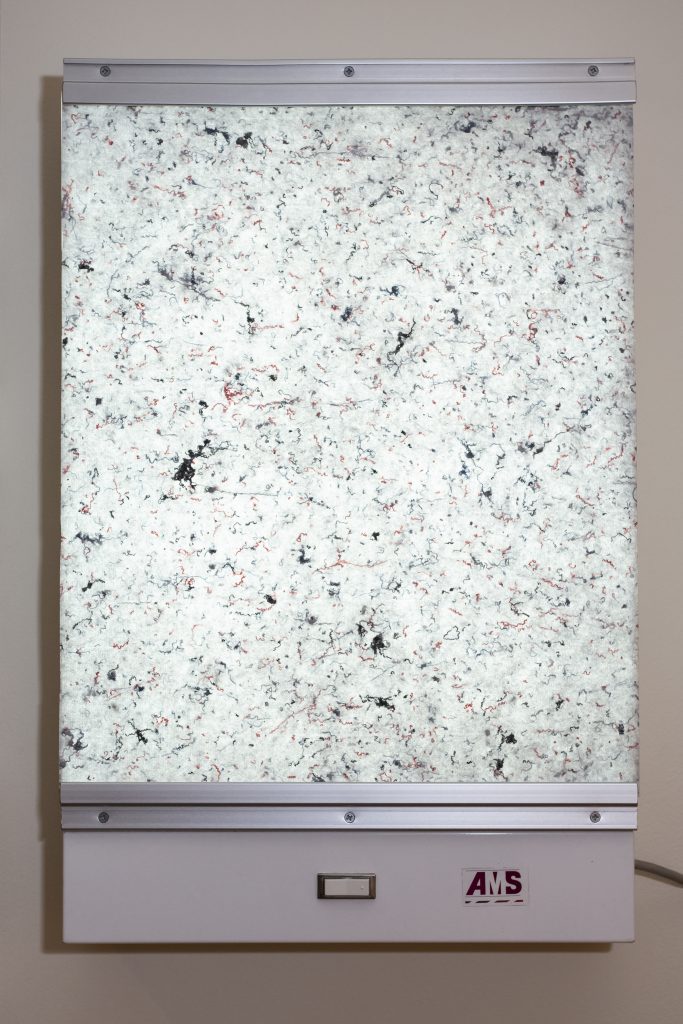
Installation Images:
